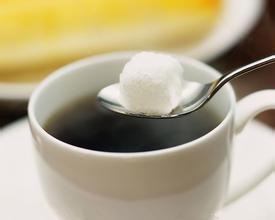Basic steps for heating milk and making milk foam
Pour the cold milk into the half of the jar; insert the coffee maker nozzle into the milk jar near the milk surface. Open the steam valve to make the nozzle spew steam.

Adjust the position and angle of the milk tank; when the amount of milk in the milk tank reaches, put the sprinkler into the bottom of the milk tank until the temperature reaches 66C; immediately turn off the steam, remove the milk tank and wipe off the steam sprinkler and spilled foam with a wet towel. Take a closer look at each step. Pour the cold milk into the middle of the vat. The milk tank is always made of stainless steel. The milk in the jar should never exceed half the position of the tank. Be confident that the volume of milk will become bigger.
Insert the neat nozzle into the milk just near the surface of the milk. Adjust the position of the vat so that the nozzle and the height of the floating foam are in balance. If the sprinkler is too low or the angle control is subtle, it takes time and experience. Milk should not be spilled everywhere, it should roll under the sprinkler. After a while, a vortex will be formed to rotate in the cylinder. After breaking neatly into the milk jar, listen to the sound of "hissing" sucking milk.
Avoid excessive rotation of milk in the milk tank, both up and down, or horizontally. Beginners always like to do this. But the result is a big foam, a short duration, and a poor level of milk. When the amount of foam in the milk tank meets the requirement, extend the nozzle into the bottom of the milk tank. Keep the sprinkler in this position until the thermometer points to 66C. This is the value of thermometers. For best results, the temperature of the milk should be between 66mur71C. Like people, milk is basically organic. Milk will be burnt when the temperature exceeds 82C. Turn off the steam immediately and move the milk jar away.
Warning: the spray pipe is hot. Direct contact with the steam will not burn you, but the exhaust pipe will not be so polite. When pouring milk into the coffee, use a spoon to block the foam, and then pour the milk into the coffee. As a general rule, don't spoon the foam into the coffee. To put it bluntly, it's an amateur and can't make a good coffee drink.
However, when your customer wants "dry foam coffee" (add only foam to the coffee, not heat the milk), you can safely use a spoon to put the foam kiln into the coffee. Some experienced shop assistants can separate milk from foam by shaking the vat in their hands. You can try to practice pouring milk into the coffee without letting the foam flow out, and then pour it out quickly. Wipe the nozzles and spilled foam with a wet towel. Unless there are a lot of guests, refrigerate the milk tank and the rest of the milk. When reheating, replenish new milk (no more than half a jar). Add enough milk, or customers will have a problem with it. After many times of heating, the milk tastes terrible when it is made into milk soo again. Finally, be sure to wipe it clean every time you foam with a nozzle.
Important Notice :
前街咖啡 FrontStreet Coffee has moved to new addredd:
FrontStreet Coffee Address: 315,Donghua East Road,GuangZhou
Tel:020 38364473
- Prev

Espresso's common sense the four elements of espresso are described in detail.
The Italian summed up four elements for espresso, one of which is indispensable, that is, the so-called four M: Macinazione: the correct grinding thickness. Coffee beans are too coarse or too fine to make thick and delicious espresso. The coffee powder is too coarse, the coffee gap in the filter bowl is too big, the resistance to water is not enough, the coffee flow rate is too fast, it is easy to cause excessive extraction and coffee is too charred.
- Next

There are seven simple principles to make good coffee.
To make good coffee, here are seven simple rules for reference. 1. Use freshly roasted coffee beans and store them for no more than a week. two。 Store the coffee beans in a dark container. 3. Freshly ground coffee beans before blending. 4. To make coffee, first put the water from the faucet for a few seconds, then use the fresh cold water that has just flowed out of the faucet, and then boil the water, but the time is not.
Related
- Beginners will see the "Coffee pull flower" guide!
- What is the difference between ice blog purified milk and ordinary milk coffee?
- Why is the Philippines the largest producer of crops in Liberia?
- For coffee extraction, should the fine powder be retained?
- How does extracted espresso fill pressed powder? How much strength does it take to press the powder?
- How to make jasmine cold extract coffee? Is the jasmine + latte good?
- Will this little toy really make the coffee taste better? How does Lily Drip affect coffee extraction?
- Will the action of slapping the filter cup also affect coffee extraction?
- What's the difference between powder-to-water ratio and powder-to-liquid ratio?
- What is the Ethiopian local species? What does it have to do with Heirloom native species?

